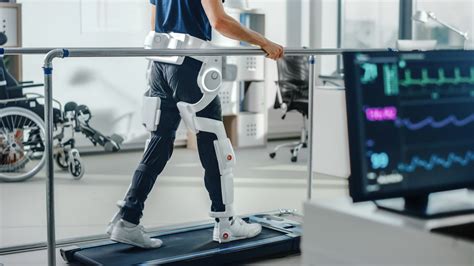Transforming Care: Advancing Physical Therapy Research and Practice
The field of physical therapy is undergoing a rapid transformation, driven by groundbreaking research and a growing understanding of the human body's intricate mechanisms. This evolution is not just about refining existing techniques; it's about fundamentally changing how we approach patient care, leading to more effective treatments, improved patient outcomes, and a more holistic approach to health and wellness. This article explores the key advancements shaping the future of physical therapy, highlighting the vital role of research in driving these changes.
What are the Latest Advancements in Physical Therapy Research?
Recent years have witnessed an explosion of research across various physical therapy specializations. This includes advancements in:
-
Neuromuscular rehabilitation: Studies are exploring the use of advanced neuroimaging techniques to better understand brain plasticity and develop targeted interventions for neurological conditions like stroke and multiple sclerosis. This involves exploring new methods like brain-computer interfaces and virtual reality therapies to improve motor function and recovery.
-
Musculoskeletal rehabilitation: Research into regenerative medicine, including stem cell therapies and growth factor injections, holds immense promise for treating musculoskeletal injuries and degenerative conditions. Biomechanical analysis is also improving, leading to more precise assessments and personalized treatment plans.
-
Cardiopulmonary rehabilitation: Advances in wearable technology and remote monitoring systems are enabling more personalized and efficient cardiopulmonary rehabilitation programs. Research focuses on optimizing exercise prescription and integrating telehealth solutions to improve patient adherence and outcomes.
-
Geriatric physical therapy: An aging global population necessitates a greater focus on geriatric physical therapy. Research focuses on improving mobility, preventing falls, and managing age-related conditions like osteoarthritis and osteoporosis. This also involves developing interventions to improve cognitive function and quality of life in older adults.
-
Pain management: Research is moving beyond simply treating symptoms to understanding the underlying mechanisms of chronic pain. This includes exploring the role of the nervous system, psychological factors, and the impact of lifestyle choices on pain perception and management. This leads to more holistic and effective pain management strategies.
What are the Current Challenges Facing Physical Therapy?
Despite the promising advancements, physical therapy still faces several significant challenges:
-
Access to care: Many individuals lack access to quality physical therapy services due to geographical limitations, high costs, and insurance coverage issues.
-
Reimbursement limitations: Inadequate reimbursement from insurance companies can make it difficult for physical therapists to provide comprehensive care and invest in advanced technologies.
-
Integration of technology: While technology offers significant potential, integrating new technologies into clinical practice requires significant investment in training and infrastructure.
-
Standardization of practice: A lack of standardization in clinical practice can lead to variability in treatment quality and outcomes. More research and collaborative efforts are needed to establish evidence-based best practices.
How Can We Improve Physical Therapy Education and Training?
To fully realize the potential of advancements in physical therapy, we need significant improvements in education and training:
-
Integration of research into curricula: Physical therapy programs need to integrate the latest research findings into their curricula to ensure graduates are equipped with the most current knowledge and skills.
-
Emphasis on critical thinking and problem-solving: Training programs should foster critical thinking and problem-solving skills, enabling therapists to effectively evaluate and apply research findings in their clinical practice.
-
Interprofessional collaboration: Emphasis should be placed on interprofessional collaboration, fostering teamwork and communication between physical therapists and other healthcare professionals.
What is the Future of Physical Therapy?
The future of physical therapy is bright, with continued advancements in research and technology poised to transform patient care. We can anticipate:
-
More personalized treatment approaches: Advances in genomics and personalized medicine will lead to more tailored treatment plans based on individual patient characteristics.
-
Increased use of technology: Wearable sensors, virtual reality, and telehealth will become increasingly integrated into physical therapy practice, enhancing assessment, treatment delivery, and remote monitoring.
-
Greater emphasis on prevention and wellness: Physical therapists will play an increasingly prominent role in preventative care, promoting healthy lifestyles and preventing musculoskeletal and neurological disorders.
-
Stronger focus on outcomes measurement: There will be an increased emphasis on measuring patient outcomes to ensure treatment effectiveness and guide future research.
What are the roles of different stakeholders (patients, therapists, researchers, policy makers) in this transformation?
Patients: Active participation in their treatment plan, providing feedback, and advocating for access to quality care.
Therapists: Embracing continuing education, integrating new technologies, and actively participating in research.
Researchers: Conducting rigorous studies that address the most pressing needs of the field, disseminating findings effectively.
Policy Makers: Ensuring equitable access to care, establishing fair reimbursement policies, and promoting evidence-based practice.
The transformation of physical therapy is not simply a matter of technological advancements; it's a fundamental shift in how we understand and treat movement, pain, and dysfunction. By fostering collaboration, investing in research, and embracing innovation, we can unlock the full potential of physical therapy and create a healthier future for all.

